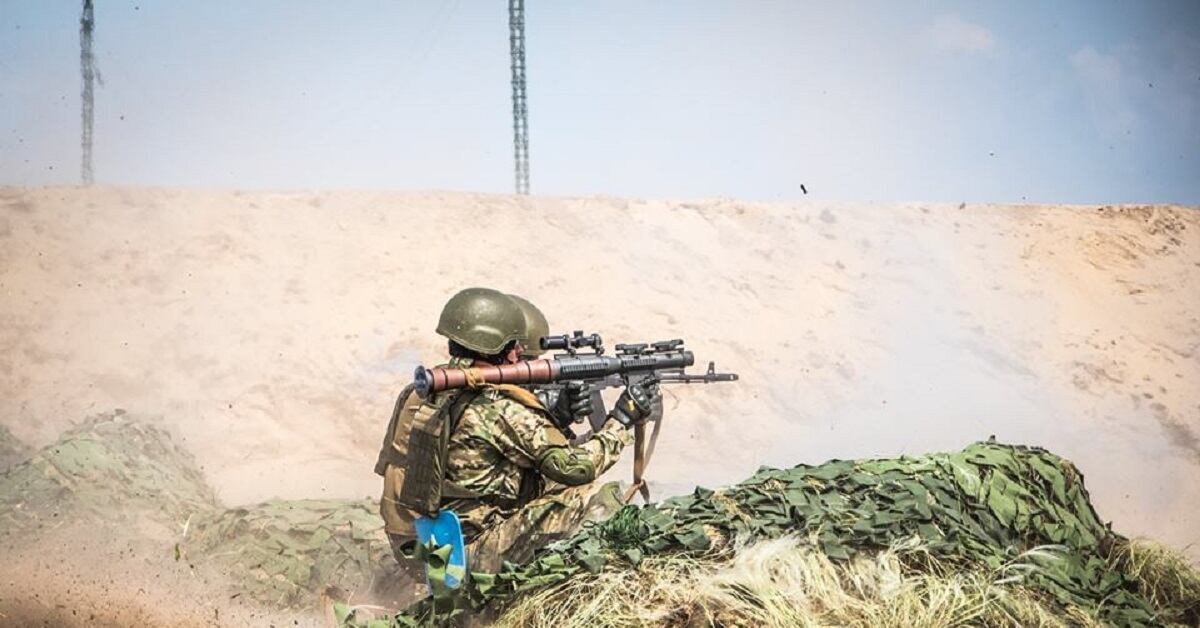Ukrainian National Guard troops were spotted in early May training with a modified American version of the RPG-7 — the PSRL-1 rocket-propelled grenade launcher, made by the Texas-based company AirTronicUSA.
The Atlantic Council's Digital Forensic Research Lab, which first spotted the rocket in social media posts, concluded that its presence across Ukraine points to a more than symbolic contribution of weapon systems from the United States.
The RPG-7 is a Russian-made anti-tank grenade launcher that fires 40 mm rockets, and had long been found in Ukrainian armories, according to the Atlantic Council. The American PSRL-1 is supposed to be an upgrade on that RPG-7 design.
The American version is fitted with a Picatinny rail — commonly found on M4 Carbines among other U.S. weapons — for mounting combat optics such as Eotech holographic sights, lasers, tactical lights, and vertical fore-grips, according to an AirTronicUSA fact sheet on the weapon.
The sale of the weapon appeared to be first announced in December by Spetstechnoexport, a Ukrainian defense company, according to the Atlantic Council.
As a country that has been bogged down in a low-kinetic conflict with Russian proxy forces since 2014, Ukraine has long sought lethal military aid from the United States. Under the Obama administration, aid was allegedly limited to training and support equipment out of a fear of further aggravating tensions.
Though, going back to October 2016, the Atlantic Council noted that an AirTronicUSA press release outlined a pending sale of the PSRL-1 to an “Allied European military customer.”
President Donald Trump began the process to clear sales of more lethal aid in December, though it was commonly characterized as “defensive lethal aid.” Javelin anti-tank missiles were cleared for sale to Ukraine in March by the U.S. State Department for an estimated cost of $47 million, which includes 210 missiles and 37 launchers.
Apparently, however, small arms sales by private companies have been ongoing since before then.
In a December interview with Voice of America, AirTronicsUSA Chief Operating Officer Richard Vandiver said his company started delivering products to Ukraine last year, and continues to do so today. Those sales have been limited to short-range defensive weapons, like the PSRL-1.
“Obviously, PSRL is a lethal system, but it’s a defensive lethal system,” Vandiver told Voice of America. “As long as the weapon system stays [in government-controlled territory], it’s not an offensive weapon, but if armor starts to cross the river then I would assume that the Ukrainian defense forces would employ our systems to stop the armor.”
Anti-tank weapons are key in the Ukrainian conflict, where neither side is able to field effective air support due to the presence of short-range air defense systems.
The conflict is currently sitting at a simmer, with not much change in territory for either side. Still, Ukraine fears renewed Russian aggression, if it does come, will arrive through armored tanks and vehicles that would be difficult to repel without weapons like the PSRL-1 or the infrared-guided Javelin missile.
Kyle Rempfer was an editor and reporter who has covered combat operations, criminal cases, foreign military assistance and training accidents. Before entering journalism, Kyle served in U.S. Air Force Special Tactics and deployed in 2014 to Paktika Province, Afghanistan, and Baghdad, Iraq.




